The photo documentation
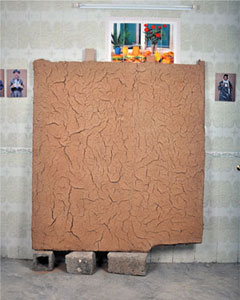 The clay wall/background for the portrait photos
An exhibition of up to 1500 photos of Anfal survivors with mementos of their disappeared and murdered relatives
will be at the heart of the memorial forum.
The clay wall/background for the portrait photos
An exhibition of up to 1500 photos of Anfal survivors with mementos of their disappeared and murdered relatives
will be at the heart of the memorial forum.
Since 2010, local photographers, advised by the German counselor Prof. Michael Fehr, have taken portrait photos of Anfal
survivors in Rizgary and surrounding towns and villages. A transportable clay wall echoing the traditional houses of the
Germyan region, serves as background for the photos. Thus the photographers can take the photo studio also to remote
villages to portrait survivors. The survivors bring photos, identity cards or personal belongings of their murdered
relatives, or, if they do not have anything left, they write the names of their relatives on their hands or a piece
of paper. Their testimony is recorded and artifacts they brought are documented and archived.
One thousand two hundred photos have already been taken; several hundreds more will follow. The photo gallery will be
installed around the inner wall of the memorial forum.
 Photo appointment in Rizgary
Photo appointment in Rizgary
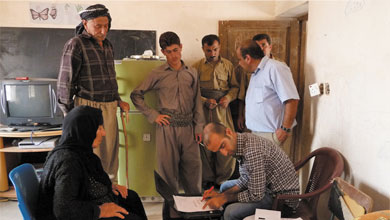 Photo appointment with Anfal survivors in a village
Photo appointment with Anfal survivors in a village
The constantly growing photo exhibition is a central element of the memory work within the project. The photos tell the
story of both, the victims and the survivors, and build a bridge between past and present. They memorize the dead, but
focus on the living. They thus reflect the survivors' long way from desperation and grief to the discovery of their
strengths and survivors' pride.
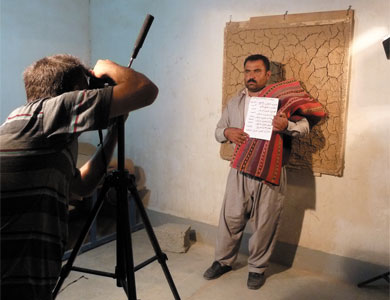 Photo appointment in a village
Not only women Anfal survivors, but also numerous men have come to be portrayed. While initially they had some critics upon
the focus of the memorial forum on women, they meanwhile see the forum as a possibility to give their disappeared and
murdered wives, daughters, mothers face and name and contribute their own perspectives and experience to the forum.
Photo appointment in a village
Not only women Anfal survivors, but also numerous men have come to be portrayed. While initially they had some critics upon
the focus of the memorial forum on women, they meanwhile see the forum as a possibility to give their disappeared and
murdered wives, daughters, mothers face and name and contribute their own perspectives and experience to the forum.
The mobile photo study has itself developed into a social space. Anfal survivors meet here, exchange their memories and
jointly complement the photo documentation. Many come regularly to the photo appointments for meeting other survivors.
Public exhibitions of the growing photo collection in various cities in Kurdistan-Iraq have been used by women Anfal
survivors to elicit support for their project and to bring their testimonies and their claims into the media and public debate.
Here you find a choice of photographs..





The building
For more than five years women Anfal survivors have discussed on the design for the memorial building with local and
German artists and architects. Finally the design developed by the German architects Ingrid Moye/Christoph Zeller,
was enthusiastically received from all sides. The design integrates meeting hall, exhibition floors and social spaces
into a protecting outside wall. It combines traditional materials with modern forms. Thus the building adopts to the
Germyan landscape and addresses at the same time the survivors' wish for visibility and uniqueness.
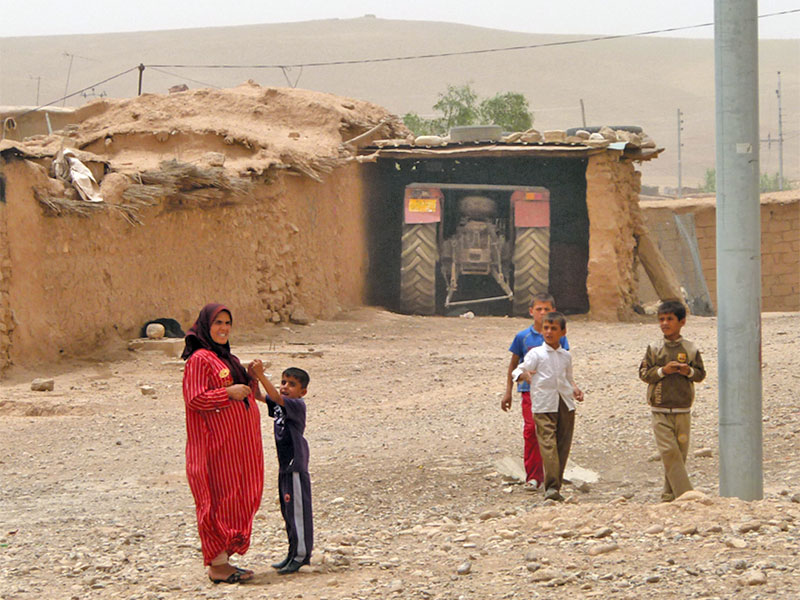 Germyan village
Germyan village
The walkable roof allows the visitors to look at the cemetery and thus relate to the victims; the protected and green
internal space offers room for remembrance and social activities. The external wall reminds of the notorious prison of
Nugra Salman on one side and of the traditional Germyan houses destroyed by Anfal on the other side. The design has
meanwhile been accepted for construction by the Ministry of Martyrs and Anfal Affairs.
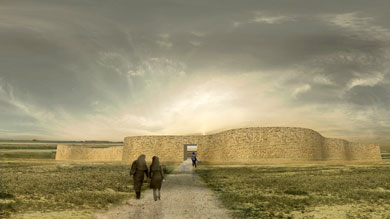 Town View
Town View
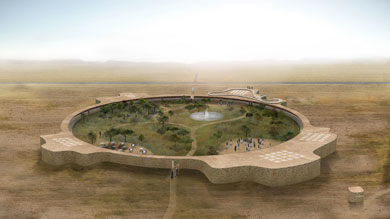 Aerial View
Aerial View
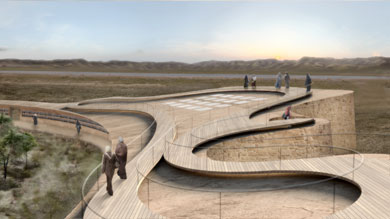 Terrace
Terrace
 Garden
Garden
Read more: Rundbrief von Haukari e.V. vom Dezember 2013 ("Das Erinnerungsforum nimmt Gestalt an").
Women statue
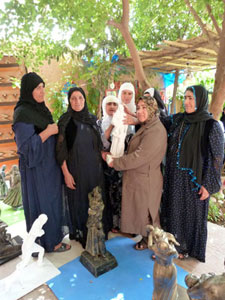 Discussion on models for woman statue
A life size woman statue in front of the memorial building shall represent women Anfal survivors'specific suffering and
mark the place as a women's initiative.
Discussion on models for woman statue
A life size woman statue in front of the memorial building shall represent women Anfal survivors'specific suffering and
mark the place as a women's initiative.
In intense discussions with local artists the women developed the idea of an up-right woman with one dead child in her
arms and another child at her side. Thus the statue shall express both the grief about the dead as well as the strength
of the surviving women and children.
In various tenders Kurdish artists have designed 15 different models for the statue. The process in ongoing, a decision
has not yet been taken by the women. However, the process of discussing the statue has served as a forum for the women
to articulate their often contrasting emotions of despair, grief, hope and pride.